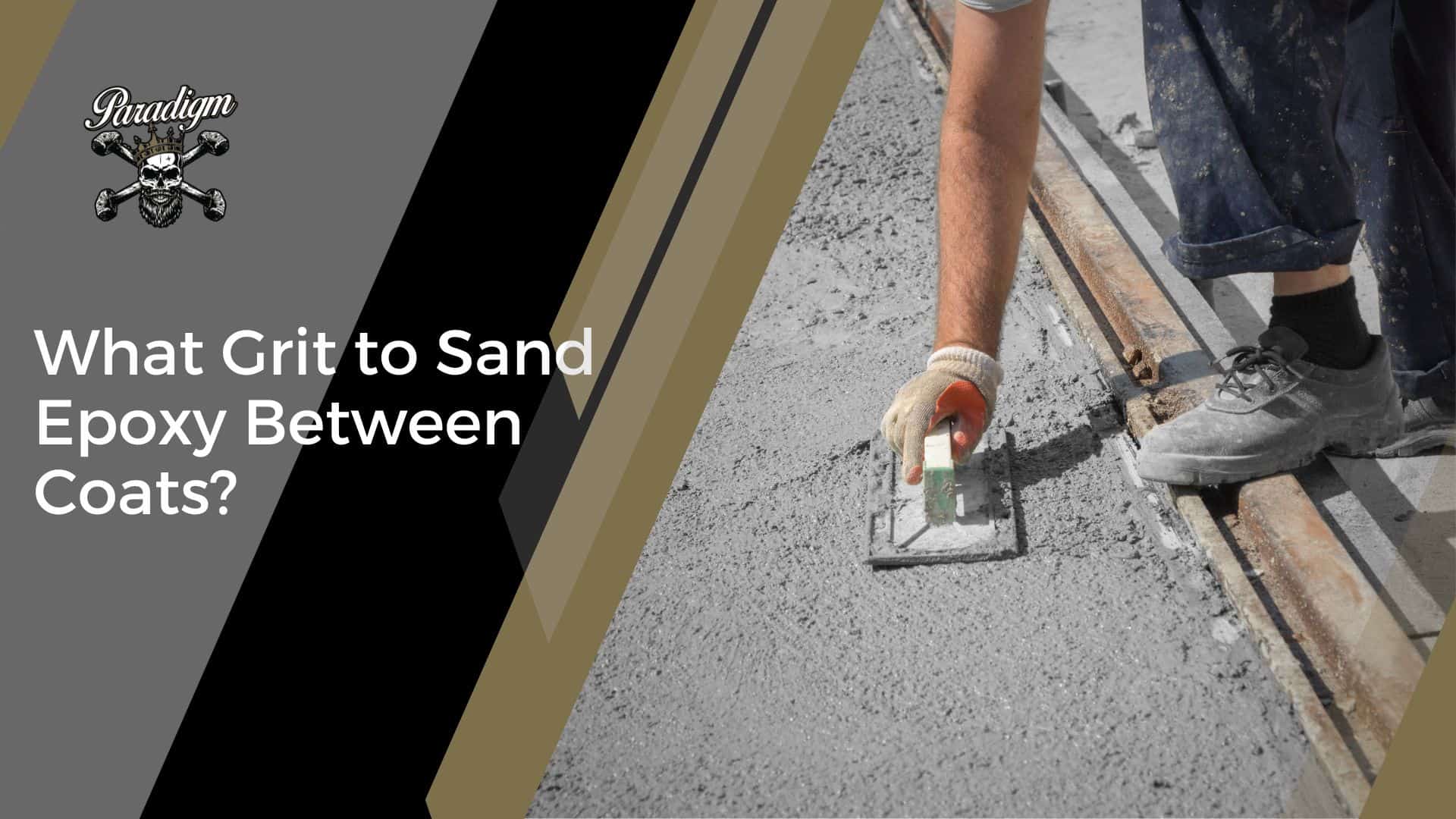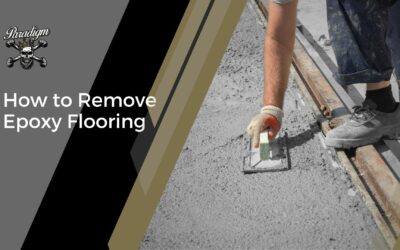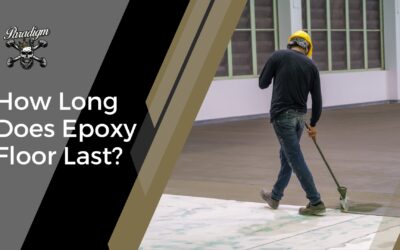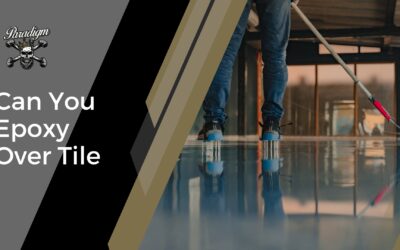“Grit between coats” refers to the level of coarseness or fineness of the sandpaper used when sanding between layers of a coating, such as epoxy. This process is commonly employed to achieve a smooth and even surface before applying subsequent coats of the coating.
An epoxy coating is a protective layer made from epoxy resin that is applied to surfaces to provide exceptional durability and resistance to harsh environments.
Epoxy coatings are commonly used in various applications such as floor coatings, adhesives, fiber-reinforced polymers, and encapsulation materials for the electrical industry.
They are synthesized through the reaction of epichlorohydrin with compounds like bisphenol-A, resulting in materials with outstanding durability suitable for demanding applications.
Epoxy coatings are tailored to fulfill specific performance requirements and are utilized in anti-corrosion applications in liquid and powder forms.
Table of Contents
What Is Grit Between Coats?
The term “grit between coats” denotes the degree of roughness or smoothness in the sandpaper employed during the intermediate sanding stages between layers of a coating like epoxy. This technique is frequently utilized to attain a uniformly flat and polished surface in preparation for the application of successive coats of the coating.
The term “grit” in this context refers to the size of abrasive particles embedded in the sandpaper. Different grit levels are available, ranging from coarse to fine, with each level designed for specific stages of the sanding process.
When sanding between coats of a coating like epoxy, the choice of grit depends on the desired level of surface refinement and the condition of the previous coat.
- Coarse grit sandpaper, such as 80 or 120 grit, is typically used for initial sanding to remove imperfections, rough areas, or high spots.
- Medium-grit sandpaper, like 150 to 220 grit, is then used to further smooth the surface and prepare it for additional coats.
- Fine-grit sandpaper, such as 320 or 400 grit, is used for final sanding to achieve a polished and uniform finish.
The grit between coats plays a crucial role in achieving a professional-quality finish by removing flaws, leveling the surface, and promoting adhesion between layers of the coating. It’s important to follow manufacturer recommendations and best practices when selecting the appropriate grit for sanding between coats to ensure optimal results.
What Are Grit Levels?
The grit of sandpaper is the coarseness or fineness of its abrasive particles. Different grit levels are suited for specific stages of sanding between epoxy coats. Here are the common grit options and their recommended uses:
- Coarse Grit (80-120): Coarse-grit sandpaper, such as 80 or 120 grit, is ideal for initial sanding between epoxy coats. It helps remove larger imperfections, drips, or high spots from the surface, providing aggressive material removal.
- Medium Grit (150-220): Medium-grit sandpaper, ranging from 150 to 220 grit, is used for refining the surface after initial sanding with coarse grit. It smooths out scratches left by coarse grit sandpaper and prepares the surface for subsequent coats.
- Fine Grit (320-400): Fine-grit sandpaper, such as 320 or 400 grit, is suitable for final sanding between epoxy coats. It removes fine scratches, smoothes out the surface, and prepares it for additional coats or a topcoat finish.
What’s the Importance of Sanding Between Coats?
Sanding between coats serves several critical purposes that contribute to the overall quality and durability of the finish:
- Surface Preparation: Sanding helps smooth out imperfections, bumps, and rough areas on the surface. This creates a uniform and level base for the next coat of paint or finish.
- Enhanced Adhesion: Sanding creates a slightly roughened surface that improves the adhesion of the subsequent coat. This strong bond ensures that the new coat adheres firmly to the surface, reducing the risk of peeling or flaking.
- Removal of Contaminants: Sanding removes any dust, debris, or foreign particles that have settled on the surface during the drying or curing of the previous coat. This ensures a clean and blemish-free surface for the next coat.
- Smooth Finish: Sanding between coats helps achieve a smooth and professional finish by eliminating brush marks, roller marks, or uneven areas left by the previous coat. It creates a seamless transition between coats for a flawless appearance.
- Improved Durability: By creating a properly prepared surface with good adhesion between coats, sanding helps improve the overall durability and longevity of the finish. It reduces the likelihood of premature wear, chipping, or peeling over time.
Sanding between coats is essential for achieving a high-quality finish with excellent adhesion, durability, and aesthetic appeal. It is a crucial step in the painting or finishing process that you don’t overlook.
What Are Epoxy Coatings?
Epoxy coating is a type of protective finish applied to surfaces, typically made from epoxy resins and hardeners. It forms a durable, high-gloss, and chemically resistant layer that adheres tightly to the substrate, protecting against abrasion, corrosion, chemicals, and wear.
Epoxy coatings are commonly used in various applications, including flooring, countertops, industrial equipment, marine vessels, and automotive components.
They offer excellent adhesion to a smorgasbord of materials, including concrete, metal, wood, and plastics customized with additives such as pigments, fillers, or aggregates to enhance performance or achieve specific aesthetic effects.
Epoxy coatings are known for their durability, easy maintenance, and versatility, making them a popular choice for residential and commercial applications.
Epoxy coatings offer several key features and benefits:
- Durability: Epoxy coatings are highly durable and resistant to wear, abrasion, impact, and chemicals. They provide a protective barrier that enhances the longevity of surfaces.
- Adhesion: Epoxy coatings adhere strongly to an array of substrates, including concrete, metal, wood, and plastics. This strong adhesion ensures a secure bond and prevents delamination or peeling.
- Chemical Resistance: Epoxy coatings exhibit excellent resistance to chemicals, such as acids, alkalis, solvents, oils, and fuels. This makes them suitable for environments where chemical exposure is a concern, such as industrial facilities, laboratories, and chemical processing plants.
- Versatility: Epoxy coatings are versatile and customized to suit various applications. They are available in different formulations, colors, textures, and finishes, allowing for decorative, protective, or functional coatings.
- Seamless Finish: When properly applied, epoxy coatings create a seamless and smooth surface that is easy to clean, maintain, and sanitize. This makes them ideal for environments requiring hygienic conditions, such as hospitals, food processing facilities, and pharmaceutical labs.
- Decorative Options: In addition to their protective properties, epoxy coatings are utilized for decorative purposes. They are combined with pigments, metallic flakes, or decorative chips to create visually appealing and customized finishes for floors, countertops, and other surfaces.
- Fast Curing: Epoxy coatings typically cure quickly, allowing for rapid installation and minimal downtime. This is advantageous in commercial and industrial settings where downtime must be minimized.
- UV Stability: Some epoxy coatings are formulated with UV inhibitors, providing resistance to UV radiation and preventing yellowing or discoloration over time. This is important for exterior applications or areas exposed to sunlight.
Epoxy coatings find widespread use in various industries and applications, viz:
- Flooring: Epoxy floor coatings are commonly used in commercial, industrial, and residential settings for their durability, chemical resistance, and decorative options.
- Protective Coatings: Epoxy coatings protect metal surfaces from corrosion, chemical exposure, and weathering.
- Concrete Restoration: Epoxy coatings are applied to concrete surfaces to repair cracks, improve durability, and enhance aesthetics.
- Marine Applications: Epoxy coatings are used in marine environments to protect boat hulls, decks, and structures from water damage and corrosion.
- Automotive: Epoxy coatings are used in automotive applications for corrosion protection, paint primers, and protective coatings for components.
What Are the Best Practices of Sanding Epoxy Between Coats?
When sanding epoxy between coats, following best practices ensures a smooth and professional finish. Here are some key best practices to keep in mind:
- Surface Preparation: Ensure that the epoxy surface is fully cured and free from any contaminants before sanding. Clean the surface with a mild detergent and water, then allow it to dry completely.
- Choose the Right Grit: Select the appropriate grit level based on the stage of sanding. Start with a coarse grit, such as 80 or 120, for initial sanding to remove imperfections. Use medium grit, like 150 to 220, for refining the surface, and finish with fine grit, such as 320 or 400, for a smooth finish.
- Use Light Pressure: Apply light and even pressure when sanding to avoid damaging the epoxy surface. Let the sandpaper do the work, and avoid pressing too hard, especially with finer grits.
- Work in a Crosshatch Pattern: Sand in a crosshatch pattern to ensure uniform sanding and avoid creating grooves or scratches. Move the sandpaper back and forth in one direction, then switch to a perpendicular direction for the next pass.
- Inspect and Clean: Periodically inspect the sanded surface for smoothness and uniformity. Use a clean cloth to wipe away dust and debris between sanding passes. Inspecting the surface helps identify any areas that need additional sanding or touch-ups.
- Repeat as Necessary: Depending on the condition of the epoxy surface and the desired finish, that requires repeating the sanding process with progressively finer grits until you achieve the desired smoothness.
- Consider Wet Sanding: For finer grits, wet sanding with water or a lubricant further improves surface smoothness and reduces dust. Use a spray bottle to mist the surface lightly before sanding it with a fine-grit sandpaper.
- Follow Manufacturer Guidelines: Always follow the manufacturer’s recommendations and guidelines for sanding epoxy coatings. This includes curing times, recommended grit sizes, and any specific instructions for achieving the best results.
How long do I wait between applying coats of epoxy and sanding?
Follow the manufacturer’s recommended curing times before sanding between coats of epoxy. The length of time typically ranges from a few hours to overnight, depending on the product.
How does temperature and humidity affect epoxy curing time between coats?
Temperature and humidity play significant roles in the curing time of epoxy. Optimal curing occurs at temperatures between 70 to 85 degrees Fahrenheit. If the temperature is too low, the epoxy may cure slowly or not at all, while high temperatures can cause it to cure too quickly, potentially leading to an uneven finish or other defects. High humidity can also affect the curing process by introducing moisture that can interfere with the bond between the epoxy layers or cause cloudiness in the finish.
What are the first steps in removing epoxy flooring if a reapplication is needed?
Removing epoxy flooring involves several key steps, beginning with determining the type of epoxy used and the extent of the area that needs removal. The first physical step is typically to use a power sander or grinder equipped with a diamond grinding wheel to mechanically remove the top layers of the epoxy. This process creates a lot of dust and requires proper safety equipment such as masks and eye protection.
Do I need to sand between every coat of epoxy?
It’s generally recommended to sand between coats of epoxy to achieve optimal adhesion and a smooth finish. Nonetheless, stick to the manufacturer’s guidelines for specific instructions.
How much pressure do I apply when sanding epoxy between coats?
Apply light and even pressure to avoid damaging the epoxy surface. Let the sandpaper do the job, especially with finer grits, to achieve a professional result.




